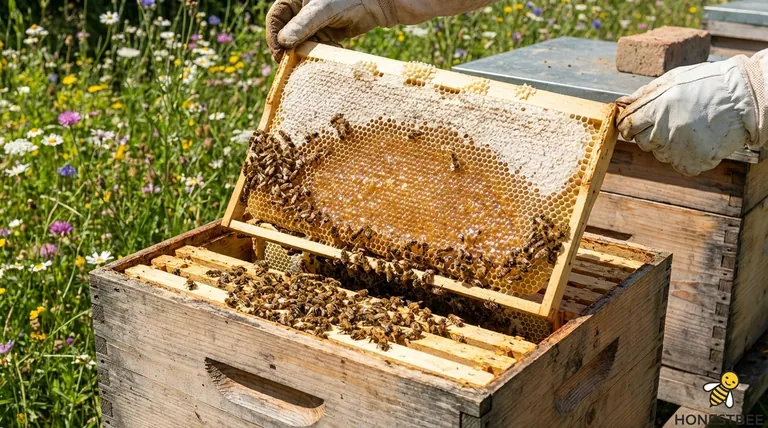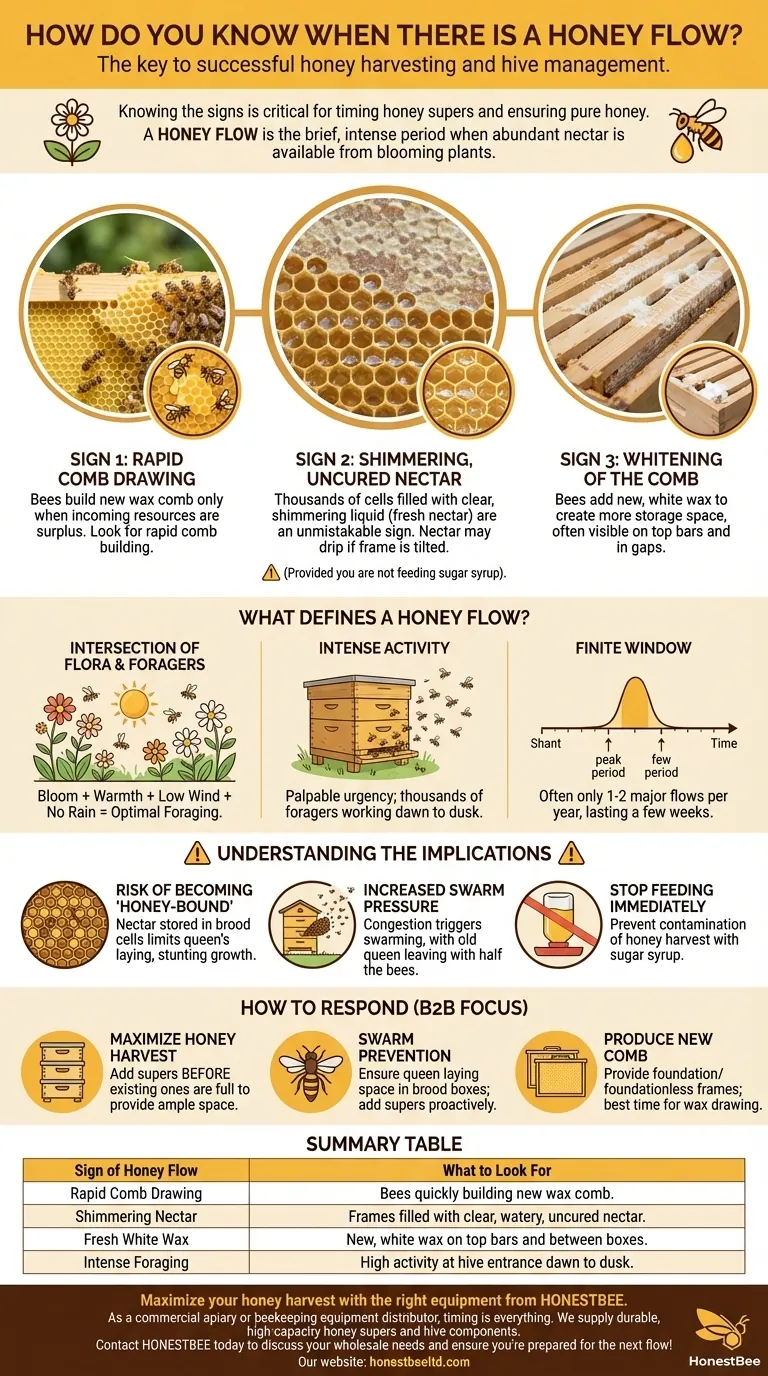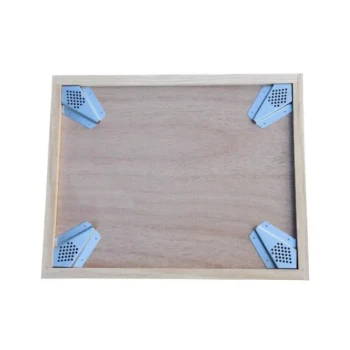Knowing when the honey flow is on is the key to successful honey harvesting and hive management. You can confirm a honey flow has begun by observing a few distinct signs within the hive. Bees will be rapidly building new wax comb, you will see frames filled with shimmering, watery nectar, and fresh, white wax will appear along the top bars of the frames and between boxes.
A honey flow is the brief, intense period when abundant nectar is available from blooming plants. Recognizing this window is critical because it dictates when to add honey supers to capture a surplus and when to stop feeding to ensure your honey is pure.

What Defines a Honey Flow?
A honey flow is not a constant state but rather a specific environmental event. It's the peak season for a beehive's productivity, driven by a perfect alignment of natural factors.
The Intersection of Flora and Foragers
A honey flow begins when major nectar-producing plants in your area come into full bloom. This event must coincide with weather conditions—warmth, low wind, and no rain—that are suitable for the bees to fly and forage efficiently.
A Period of Intense Activity
The entire colony's behavior shifts. There is a palpable sense of urgency at the hive entrance as thousands of foragers work from dawn to dusk. The goal is simple: gather as much nectar as possible while the resources are available.
It's a Finite Window
Most regions have one or two major honey flows per year, each lasting only a few weeks. This scarcity is why it's so important for a beekeeper to recognize the signs and act accordingly. Missing the window can mean a much smaller honey harvest.
Primary Signs Inside the Hive
The most definitive evidence of a honey flow is found by inspecting the frames inside your hive. These signs are unmistakable once you know what to look for.
Rapid Comb Drawing
Bees only produce wax when they have a surplus of incoming resources. If you see them rapidly building out new comb on frames of foundation, you have a clear sign that nectar is plentiful.
Shimmering, Uncured Nectar
Look at the cells in the honeycomb. During a flow, you will see thousands of cells filled with a clear, shimmering liquid—this is fresh nectar. If you turn the frame on its side, the nectar may even drip out. This is a key indicator, provided you have not been feeding the bees sugar syrup.
"Whitening" of the Comb
When bees are bringing in more nectar than they have room for, they will start adding bits of new, pure white wax to the tops of frames and in any available gaps. This "whitening" is a tell-tale sign that the bees are urgently trying to create more storage space.
Understanding the Implications
Recognizing the honey flow is not just an observation; it's a cue for critical management decisions. Failing to act can lead to significant problems for the colony.
The Risk of Becoming "Honey-Bound"
If you don't provide extra space (honey supers), the bees will begin storing nectar in the brood chamber. This fills cells the queen needs for laying eggs, which can severely limit the colony's growth and future population.
Increased Swarm Pressure
A honey-bound brood nest is a primary trigger for swarming. When the colony feels congested and has no more room to expand, its natural instinct is to split, with the old queen leaving with half the bees.
The End of Feeding
Any supplemental sugar feeding must stop the moment the honey flow begins. Continuing to feed will result in sugar syrup being stored in the honeycomb, contaminating your honey harvest and preventing it from being labeled as pure honey.
How to Respond to the Honey Flow
Your actions during the flow should directly support the bees' natural instincts to gather and store resources.
- If your primary focus is maximizing honey harvest: Add honey supers before the existing ones are completely full to give the bees ample space to store nectar without delay.
- If your primary focus is swarm prevention: Ensure the queen has plenty of laying space in the brood boxes and add supers proactively to relieve hive congestion.
- If your primary focus is producing new comb: Provide frames with foundation or foundationless frames, as the honey flow is the absolute best time for bees to draw out fresh wax.
By reading these signs, you shift from simply keeping bees to working in partnership with their natural cycle.
Summary Table:
| Sign of Honey Flow | What to Look For |
|---|---|
| Rapid Comb Drawing | Bees are quickly building new wax comb on foundation. |
| Shimmering Nectar | Frames are filled with clear, watery, uncured nectar. |
| Fresh White Wax | New, white wax appears on top bars and between boxes. |
| Intense Foraging | High activity at the hive entrance from dawn to dusk. |
Maximize your honey harvest with the right equipment from HONESTBEE.
As a commercial apiary or beekeeping equipment distributor, timing is everything. We supply the durable, high-capacity honey supers and hive components you need to capitalize on every honey flow. Ensure your operation is ready to support your bees' intense activity and prevent swarming.
Contact HONESTBEE today to discuss your wholesale needs and ensure you're prepared for the next flow!
Visual Guide

Related Products
- 10L Stainless Steel Electric Honey Press Machine
- Electric Flatting and Embossing Machine with Tray for Beekeeping
- Stainless Steel Honey Press Wax Press with Tank
- Stainless Steel Manual Honey Press with Guard for Pressing Honey and Wax
- Professional Wide Blade Honey Scraper for Beekeeping and Honey Processing
People Also Ask
- What are the unique characteristics of honey presses? Maximize Honey Yield for Small-Scale Beekeeping
- How does pressed honey compare to extracted or crush-and-strain? Unlock the Full Flavor of the Hive
- What are the key features of a honey press? Maximize Yield with Durable, Efficient Extraction
- What are the key features of the stainless steel honey press? Maximize Yield & Guarantee Purity
- What voltage options are available for stainless steel screw honey pumps? Choose the Right Power for Your Scale



















